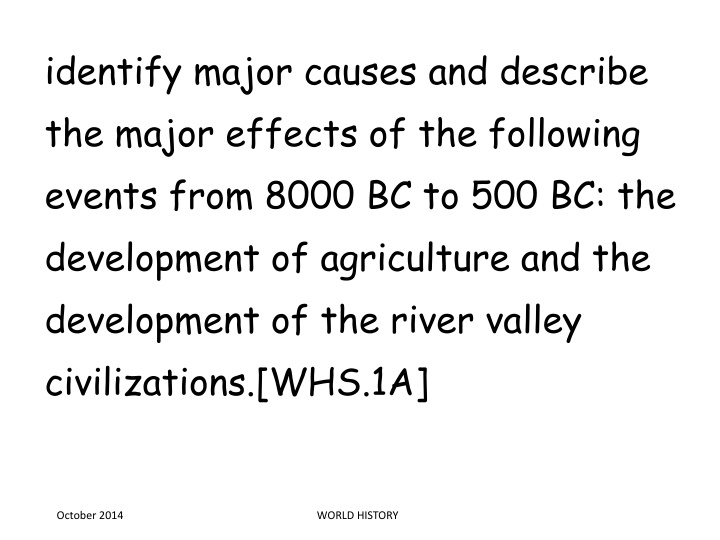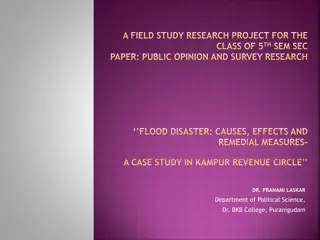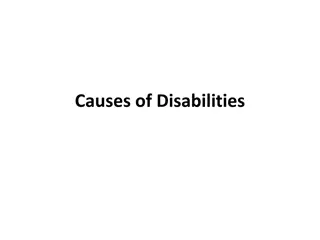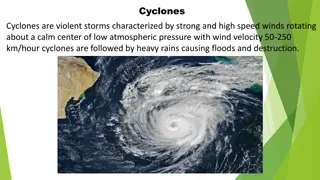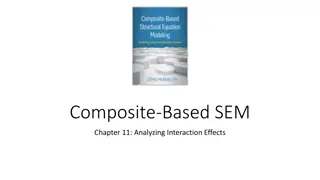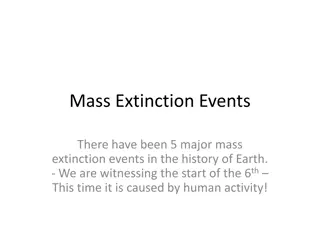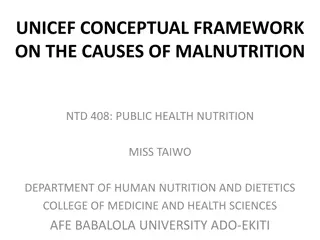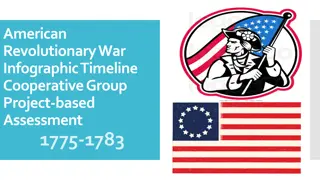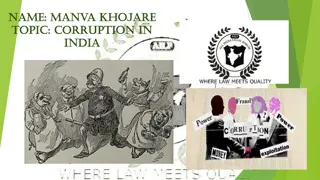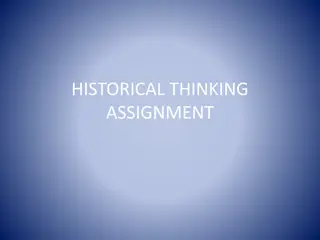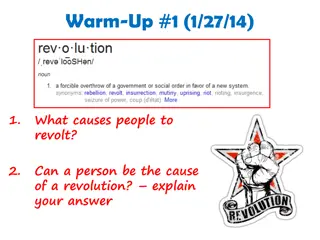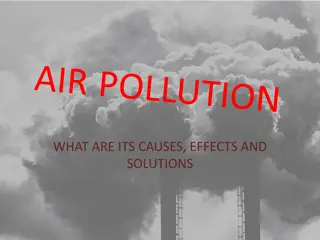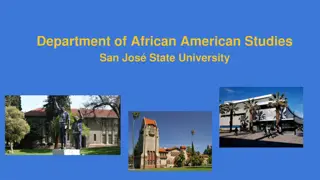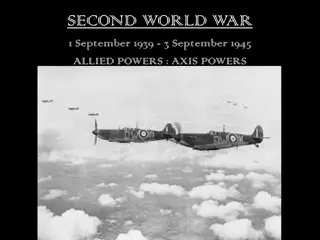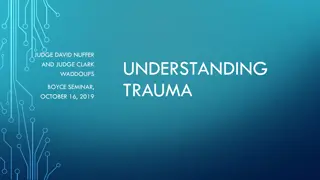Major Causes and Effects of Key Historical Events
Explore the major causes and effects of significant events in world history from 8000 BC to the present day. Discover how the development of agriculture, river valley civilizations, classical civilizations, key turning points, important revolutions, and global events shaped the modern world.
Download Presentation

Please find below an Image/Link to download the presentation.
The content on the website is provided AS IS for your information and personal use only. It may not be sold, licensed, or shared on other websites without obtaining consent from the author.If you encounter any issues during the download, it is possible that the publisher has removed the file from their server.
You are allowed to download the files provided on this website for personal or commercial use, subject to the condition that they are used lawfully. All files are the property of their respective owners.
The content on the website is provided AS IS for your information and personal use only. It may not be sold, licensed, or shared on other websites without obtaining consent from the author.
E N D
Presentation Transcript
identify major causes and describe the major effects of the following events from 8000 BC to 500 BC: the development of agriculture and the development of the river valley civilizations.[WHS.1A] October 2014 WORLD HISTORY
identify major causes and describe the major effects of the following events from 500 BC to AD 600: the development of the classical civilizations of Greece, Rome, Persia, India (Maurya and Gupta), China (Zhou, Qin, and Han), and the development of major world religions.[WHS.1B] October 2014 WORLD HISTORY
identify major causes and describe the major effects of the following important turning points in world history from 600 to 1450: the spread of Christianity, the decline of Rome and the formation of medieval Europe; the development of Islamic caliphates and their impact on Asia, Africa, and Europe; the Mongol invasions and their impact on Europe, China, India, and Southwest Asia.[WHS.1C] October 2014 WORLD HISTORY
identify major causes and describe the major effects of the following important turning points in world history from 1450 to 1750: the rise of the Ottoman Empire, the influence of the Ming dynasty on world trade, European exploration and the Columbian Exchange, European expansion, and the Renaissance and the Reformation.[WHS.1D] October 2014 WORLD HISTORY
identify major causes and describe the major effects of the following important turning points in world history from 1750 to 1914: the Scientific Revolution, the Industrial Revolution and its impact on the development of modern economic systems, European imperialism, and the Enlightenment's impact on political revolutions.[WHS.1E] October 2014 WORLD HISTORY
identify major causes and describe the major effects of the following important turning points in world history from 1914 to the present: the world wars and their impact on political, economic, and social systems; communist revolutions and their impact on the Cold War; independence movements; and globalization.[WHS.1F] October 2014 WORLD HISTORY
summarize the impact of the development of farming (Neolithic Revolution) on the creation of river valley civilizations.[WHS.2A] October 2014 WORLD HISTORY
identify the characteristics of civilization.[WHS.2B] October 2014 WORLD HISTORY
explain how major river valley civilizations influenced the development of the classical civilizations.[WHS.2C] October 2014 WORLD HISTORY
describe the major political, religious / philosophical, and cultural influences of Persia, India, China, Israel, Greece, and Rome, including the development of monotheism, Judaism, and Christianity.[WHS.3A] October 2014 WORLD HISTORY
explain the impact of the fall of Rome on Western Europe.[WHS.3B] October 2014 WORLD HISTORY
compare the factors that led to the collapse of Rome and Han China.[WHS.3C] October 2014 WORLD HISTORY
explain the development of Christianity as a unifying social and political factor in medieval Europe and the Byzantine Empire.[WHS.4A] October 2014 WORLD HISTORY
explain the characteristics of Roman Catholicism and Eastern Orthodoxy.[WHS.4B] October 2014 WORLD HISTORY
describe the major characteristics of and the factors contributing to the development of the political / social system of feudalism and the economic system of manorialism.[WHS.4C] October 2014 WORLD HISTORY
explain the political, economic, and social impact of Islam on Europe, Asia, and Africa.[WHS.4D] October 2014 WORLD HISTORY
describe the interactions among Muslim, Christian, and Jewish societies in Europe, Asia, and North Africa.[WHS.4E] October 2014 WORLD HISTORY
describe the interactions between Muslim and Hindu societies in South Asia.[WHS.4F] October 2014 WORLD HISTORY
explain how the Crusades, the Black Death, the Hundred Years' War, and the Great Schism contributed to the end of medieval Europe.[WHS.4G] October 2014 WORLD HISTORY
summarize the major political, economic, and cultural developments in Tang and Song China and their impact on Eastern Asia.[WHS.4H] October 2014 WORLD HISTORY
explain the development of the slave trade.[WHS.4I] October 2014 WORLD HISTORY
analyze how the Silk Road and the African gold-salt trade facilitated the spread of ideas and trade.[WHS.4J] October 2014 WORLD HISTORY
summarize the changes resulting from the Mongol invasions of Russia, China, and the Islamic world.[WHS.4K] October 2014 WORLD HISTORY
explain the political, intellectual, artistic, economic, and religious impact of the Renaissance.[WHS.5A] October 2014 WORLD HISTORY
explain the political, intellectual, artistic, economic, and religious impact of the Reformation.[WHS.5B] October 2014 WORLD HISTORY
compare the major political, economic, social, and cultural developments of the Maya, Inca, and Aztec civilizations and explain how prior civilizations influenced their development.[WHS.6A] October 2014 WORLD HISTORY
explain how the Inca and Aztec empires were impacted by European exploration / colonization.[WHS.6B] October 2014 WORLD HISTORY
analyze the causes of European expansion from 1450 to 1750.[WHS.7A] October 2014 WORLD HISTORY
explain the impact of the Columbian Exchange on the Americas and Europe.[WHS.7B] October 2014 WORLD HISTORY
explain the impact of the Atlantic slave trade on West Africa and the Americas.[WHS.7C] October 2014 WORLD HISTORY
explain the impact of the Ottoman Empire on Eastern Europe and global trade.[WHS.7D] October 2014 WORLD HISTORY
explain Ming China's impact on global trade.[WHS.7E] October 2014 WORLD HISTORY
explain new economic factors and principles that contributed to the success of Europe's Commercial Revolution.[WHS.7F] October 2014 WORLD HISTORY
explain how 17th and 18th century European scientific advancements led to the Industrial Revolution.[WHS.8A] October 2014 WORLD HISTORY
explain how the Industrial Revolution led to political, economic, and social changes in Europe.[WHS.8B] October 2014 WORLD HISTORY
identify the major political, economic, and social motivations that influenced European imperialism.[WHS.8C] October 2014 WORLD HISTORY
explain the major characteristics and impact of European imperialism.[WHS.8D] October 2014 WORLD HISTORY
explain the effects of free enterprise in the Industrial Revolution.[WHS.8E] October 2014 WORLD HISTORY
compare the causes, characteristics, and consequences of the American and French revolutions, emphasizing the role of the Enlightenment, the Glorious Revolution, and religion.[WHS.9A] October 2014 WORLD HISTORY
explain the impact of Napoleon Bonaparte and the Napoleonic Wars on Europe and Latin America.[WHS.9B] October 2014 WORLD HISTORY
trace the influence of the American and French revolutions on Latin America, including the role of Sim n Bolivar.[WHS.9C] October 2014 WORLD HISTORY
identify the influence of ideas such as separation of powers, checks and balances, liberty, equality, democracy, popular sovereignty, human rights, constitutionalism, and nationalism on political revolutions.[WHS.9D] October 2014 WORLD HISTORY
identify the importance of imperialism, nationalism, militarism, and the alliance system in causing World War I.[WHS.10A] October 2014 WORLD HISTORY
identify major characteristics of World War I, including total war, trench warfare, modern military technology, and high casualty rates.[WHS.10B] October 2014 WORLD HISTORY
explain the political impact of Woodrow Wilson's Fourteen Points and the political and economic impact of the Treaty of Versailles, including changes in boundaries and the mandate system.[WHS.10C] October 2014 WORLD HISTORY
identify the causes of the February (March) and October revolutions of 1917 in Russia, their effects on the outcome of World War I, and the Bolshevik establishment of the Union of Soviet Socialist Republics.[WHS.10D] October 2014 WORLD HISTORY
summarize the international, political, and economic causes of the global depression.[WHS.11A] October 2014 WORLD HISTORY
explain the responses of governments in the United States, Germany, and the Soviet Union to the global depression.[WHS.11B] October 2014 WORLD HISTORY
describe the emergence and characteristics of totalitarianism.[WHS.12A] October 2014 WORLD HISTORY
explain the roles of various world leaders, including Benito Mussolini, Adolf Hitler, Hideki Tojo, Joseph Stalin, Franklin D. Roosevelt, and Winston Churchill, prior to and during World War II.[WHS.12B] October 2014 WORLD HISTORY
